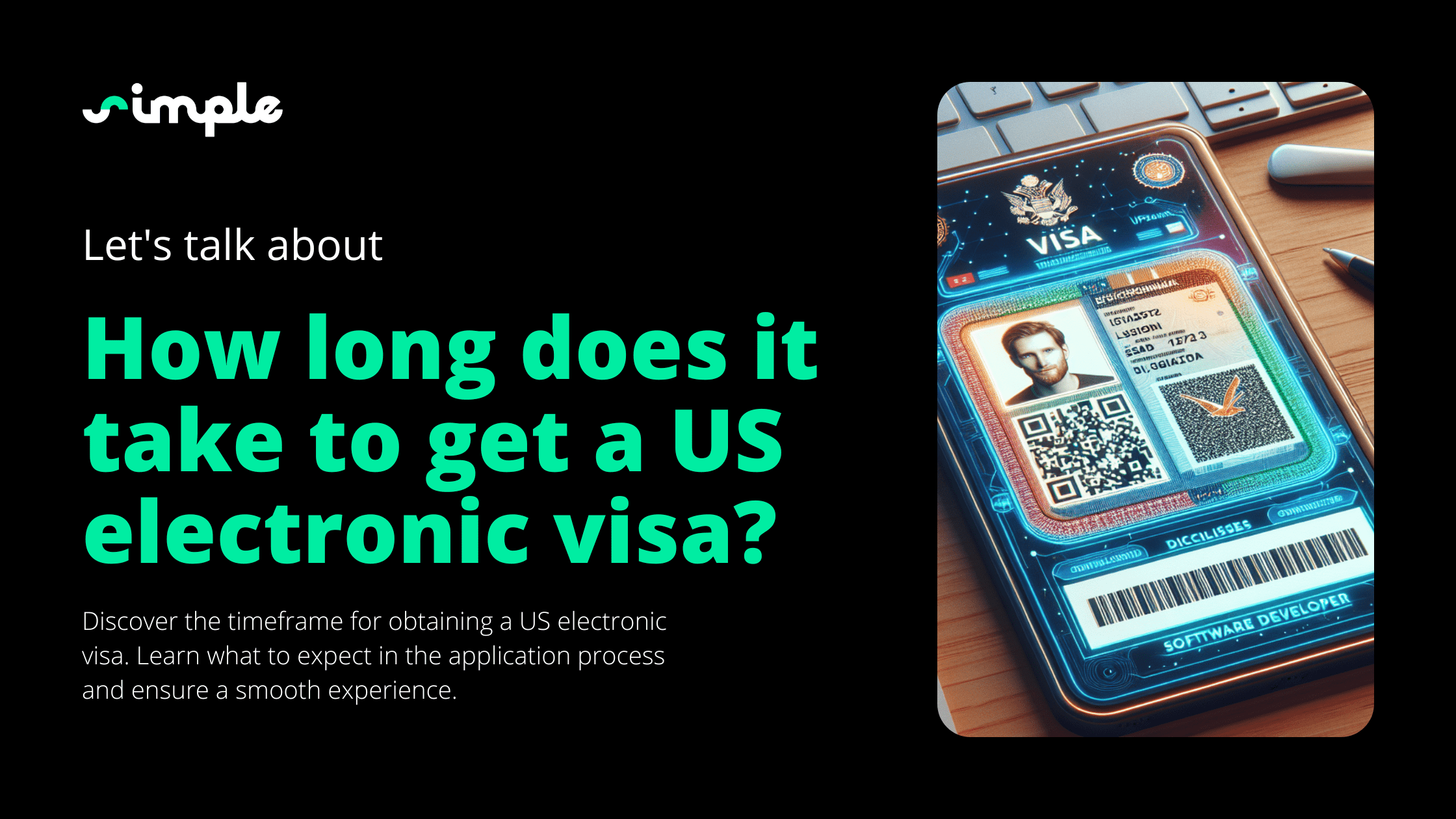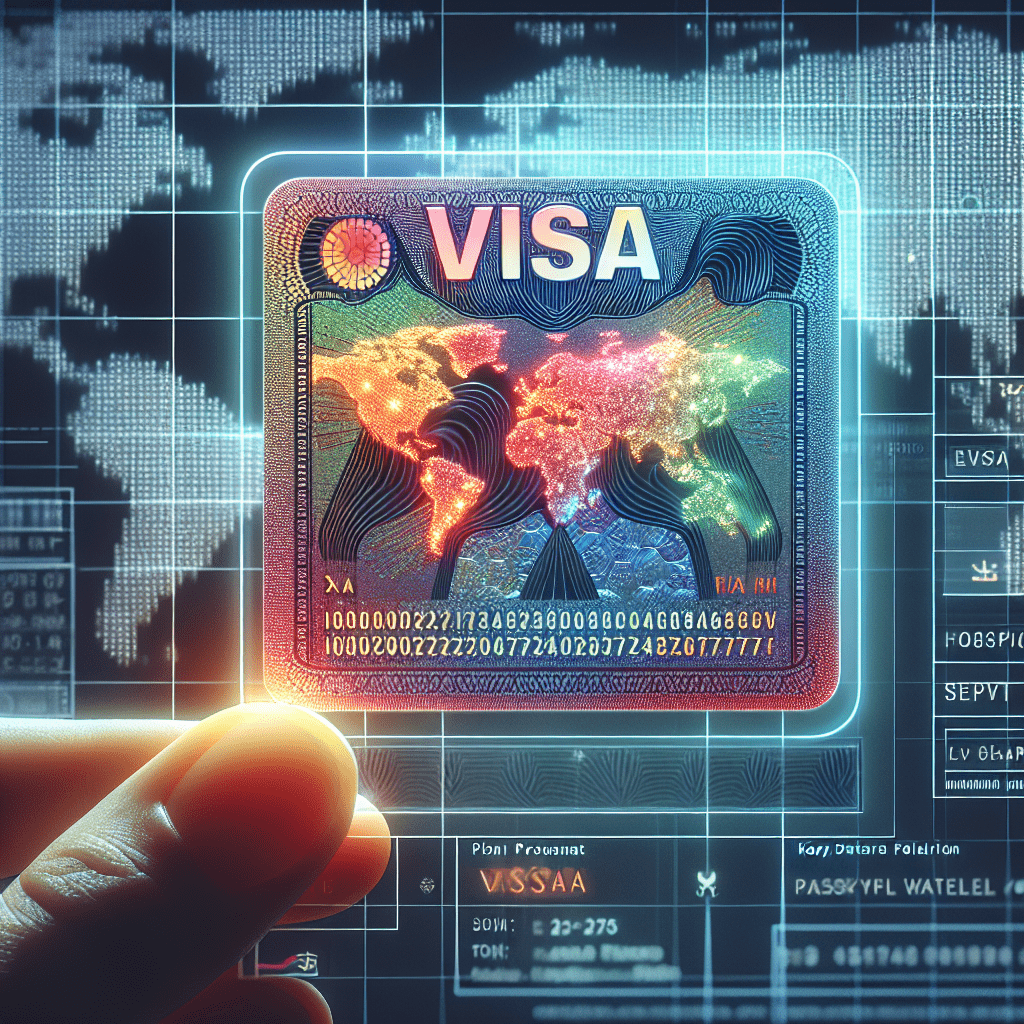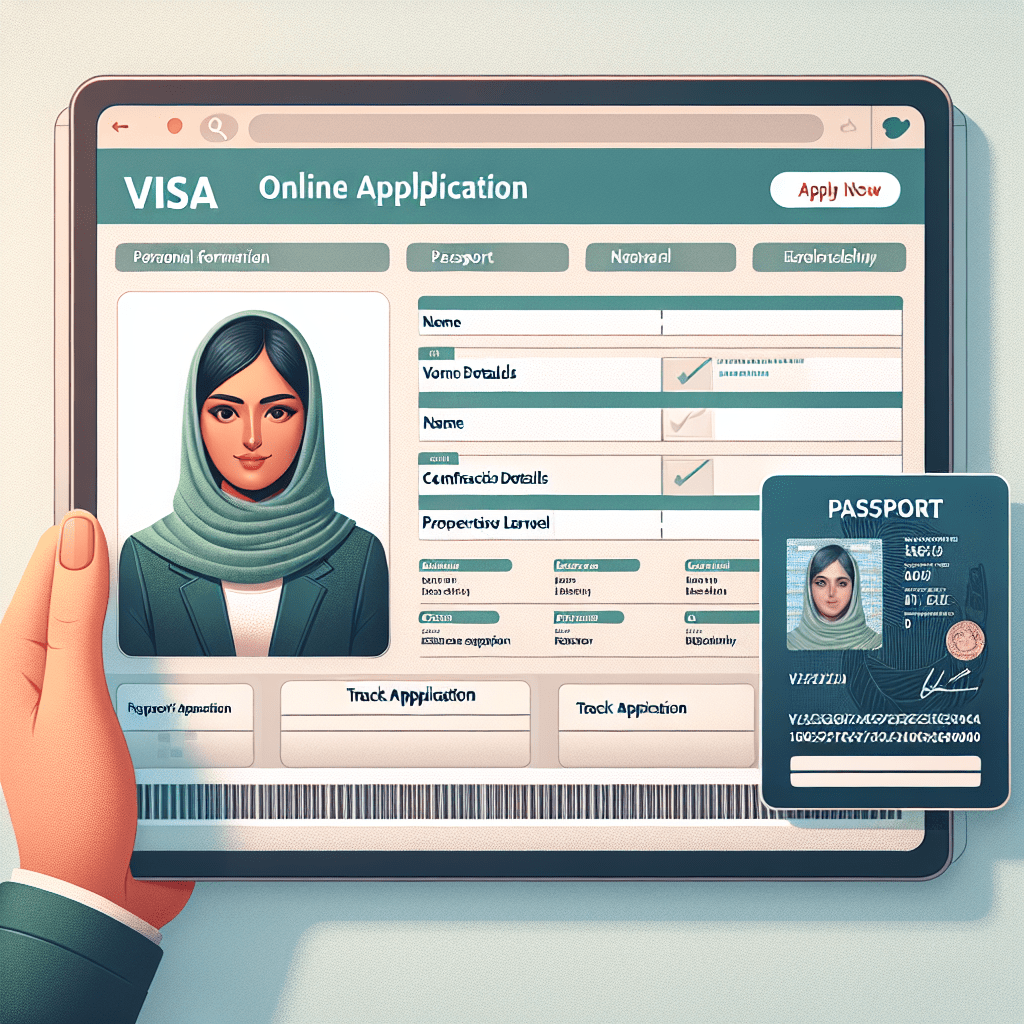How long does it take to get a US electronic visa?

Understanding the timeline for obtaining a US electronic visa is crucial for travelers planning their trips. The process of securing an electronic visa, also known as an e-visa, can vary depending on several factors, including the applicant’s nationality, the accuracy of the submitted information, and the current processing times of the relevant authorities. The US electronic visa process involves several steps, starting from filling out the online visa application to receiving the digital travel permit. This streamlined approach has made it easier for travelers to apply for their visas from the comfort of their homes, using internet-based visa services. However, the time it takes to complete this process can differ significantly from one applicant to another. The purpose of this blog post is to provide a clear and detailed understanding of the time frame required to secure a US electronic visa. By breaking down the various stages of the e-visa processing, we aim to offer valuable insights that will help you plan your travel more effectively. For more information on electronic visas, you can visit our [electronic visa](https://simplevisa.com) page.

Initial Step: Application Submission and Processing
Online application form completion
The first step in obtaining a US electronic visa is completing the online visa application form. This form is accessible through various internet visa services and online visa portals. Applicants are required to provide detailed personal information, including their full name, date of birth, nationality, and passport details. It is crucial to ensure that all information entered is accurate and matches the details on the applicant’s passport to avoid any delays in the e-visa processing. In addition to personal information, applicants must also submit necessary documentation. This typically includes a digital copy of the applicant’s passport, a recent photograph, and any other documents that may be required based on the specific type of visa being applied for. The online visa application process is designed to be user-friendly, allowing applicants to upload their documents directly through the web-based visa system.
Payment of the application fee
Once the online application form is completed, the next step is the payment of the application fee. The fee structure for a US electronic visa can vary depending on the type of visa and the applicant’s nationality. It is important to review the fee details carefully before proceeding with the payment to ensure that the correct amount is paid. Various methods of payment are accepted, including credit cards, debit cards, and other electronic payment options. The online visa portal will guide applicants through the payment process, providing a secure platform for transactions. It is advisable to keep a record of the payment confirmation as proof of payment, which may be required for future reference.
Automated initial screening
After the application form is submitted and the fee is paid, the application undergoes an automated initial screening. This process involves data verification, where the information provided by the applicant is cross-checked against various databases to ensure its accuracy and validity. The automated system is designed to identify any discrepancies or issues that may require further attention. Immediate feedback is provided to the applicant if any obvious issues are detected during the initial screening. This could include missing information, incorrect details, or discrepancies between the provided information and the supporting documents. Addressing these issues promptly can help expedite the e-visa processing and reduce the overall time required to obtain the digital travel permit. By understanding and following these initial steps, applicants can ensure a smoother and more efficient process when applying for a US electronic visa. The next sections will delve into the subsequent stages of the e-visa processing, providing further insights into the overall timeline and what to expect at each stage.

Intermediate Step: Further Processing and Review
Manual review of applications
After the initial automated screening, some applications may be selected for a manual review. This step is crucial for ensuring the accuracy and completeness of the information provided. The criteria for selecting applications for manual review can vary, but it often includes factors such as inconsistencies in the data, missing documentation, or specific flags raised during the automated screening process. Manual review involves a more detailed examination of the application by immigration officers. They verify the authenticity of the documents submitted and cross-check the information against various databases. While this step is essential for maintaining the integrity of the e-visa processing system, it can also extend the overall processing timeline. Applicants whose applications are selected for manual review should be prepared for potential delays and may need to provide additional information if requested.
Background checks and security screenings
One of the most critical aspects of the e-visa processing is conducting thorough background checks and security screenings. These checks are designed to ensure that applicants meet all eligibility criteria and do not pose any security risks. The importance of these screenings cannot be overstated, as they help maintain the safety and security of the country. The time taken for background checks and security screenings can vary depending on several factors, including the applicant’s nationality, travel history, and the complexity of their case. On average, these checks can take anywhere from a few days to several weeks. It is essential for applicants to be patient during this stage, as rushing the process could compromise the thoroughness of the checks.
Additional information requests
In some cases, applicants may be asked to provide additional information or documentation to support their online visa application. Common reasons for such requests include incomplete applications, discrepancies in the provided information, or the need for further clarification on specific details. These requests are typically communicated through the online visa portal, and applicants are given a specified timeframe to respond. Providing the requested information promptly and accurately is crucial for minimizing delays in the e-visa processing. Failure to respond within the given timeframe can result in the application being denied or further delayed. Applicants should ensure that they have all necessary documentation readily available and be prepared to submit any additional information that may be required. Understanding these intermediate steps in the e-visa processing can help applicants better anticipate potential delays and take proactive measures to ensure a smooth and efficient process. The final section will cover the concluding steps of the e-visa application process, including the issuance of the digital travel permit and what to expect upon arrival in the United States.

Final Step: Communication and Approval
Notification of electronic visa approval
Once the application has passed through the initial and intermediate stages, the final step involves receiving notification of the electronic visa approval. The typical time frame for receiving this approval can vary, but most applicants can expect to hear back within a few days to a few weeks, depending on the complexity of their case and the current workload of the immigration authorities. Applicants can track the status of their online visa application through the online visa portal provided by the internet visa service they used. This portal often includes real-time updates and notifications, allowing applicants to stay informed about the progress of their application. It is advisable to regularly check the portal for any updates or additional requests from the authorities to ensure a smooth and timely process.
Receiving the electronic visa
Once the electronic visa is approved, it is delivered to the applicant through the e-visa platform. Typically, the approved visa is sent via email, and applicants can also access it through the online visa portal. It is essential to carefully review the details on the digital travel permit to ensure that all information is correct and matches the applicant’s passport details. Applicants should print a copy of the electronic visa and keep it with their travel documents. While the visa is stored electronically, having a printed copy can be useful for reference and may be required during various stages of travel, such as at the airport or upon arrival in the United States. The digital entry permit serves as proof of the applicant’s authorization to enter the country and should be kept secure throughout the journey.
Potential delays and how to avoid them
Despite the streamlined nature of the e-visa processing, potential delays can still occur. Common causes of delays include incomplete applications, discrepancies in the provided information, and additional security screenings. To avoid these delays, applicants should ensure that all information entered in the electronic immigration form is accurate and complete. Double-checking the details and providing all necessary documentation upfront can help minimize the chances of delays. Best practices for ensuring a smooth process include responding promptly to any additional information requests, regularly checking the online visa portal for updates, and maintaining clear communication with the internet visa service. By staying proactive and attentive throughout the application process, applicants can significantly reduce the likelihood of encountering delays and ensure a timely approval of their electronic travel authorization. Understanding the final steps of the e-visa application process, from receiving notification of approval to accessing and printing the visa, is crucial for a successful travel experience. By following these guidelines and best practices, applicants can navigate the process with confidence and clarity, ensuring a smooth journey to the United States.

Conclusion
Recapping the typical timelines for each stage of the US electronic visa process provides a clearer understanding of what applicants can expect. The initial step, which involves completing the online visa application form and submitting the necessary documentation, usually takes a few hours to a couple of days, depending on how prepared the applicant is with the required information. Once the application is submitted and the fee is paid, the automated initial screening typically provides immediate feedback on any obvious issues, allowing applicants to address them promptly. The intermediate step, which includes manual review of applications, background checks, and security screenings, can vary significantly in duration. Manual reviews and background checks are essential for ensuring the accuracy and security of the application, and they can take anywhere from a few days to several weeks. Applicants should be prepared for potential delays during this stage, especially if additional information or documentation is requested. The final step involves receiving notification of electronic visa approval, which can take a few days to a few weeks after the intermediate processing is complete. Once approved, the electronic visa is delivered via email and can be accessed through the online visa portal. Applicants should print a copy of the digital travel permit and keep it with their travel documents for reference during their journey. In terms of expediting the process and avoiding common pitfalls, there are several key strategies that applicants can employ. First and foremost, ensuring that all information entered in the electronic immigration form is accurate and complete is crucial. Double-checking the details and providing all necessary documentation upfront can help minimize the chances of delays. Responding promptly to any additional information requests and regularly checking the online visa portal for updates are also essential for maintaining a smooth process. Maintaining clear communication with the internet visa service and staying proactive throughout the application process can significantly reduce the likelihood of encountering delays. By following these best practices, applicants can navigate the e-visa processing with confidence and clarity, ensuring a timely approval of their electronic travel authorization. Understanding the typical timelines and potential challenges at each stage of the process allows applicants to better plan their travel and avoid common pitfalls, ultimately leading to a successful and stress-free journey to the United States.